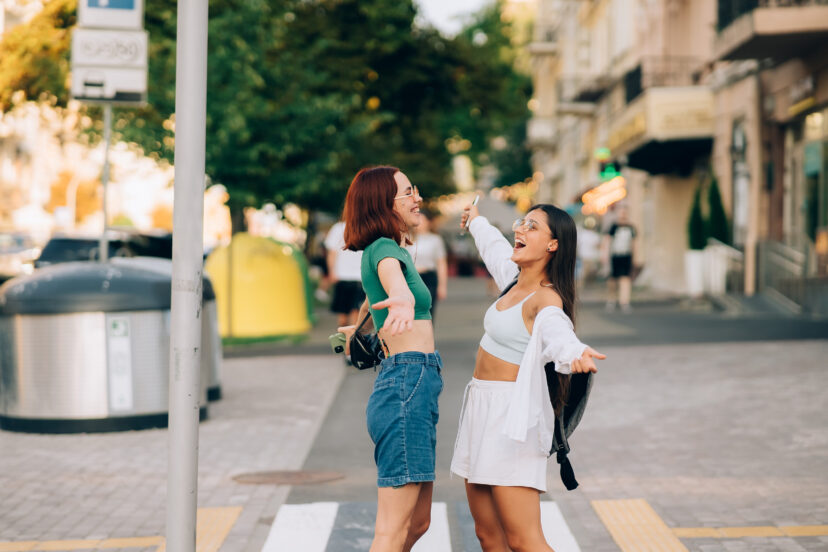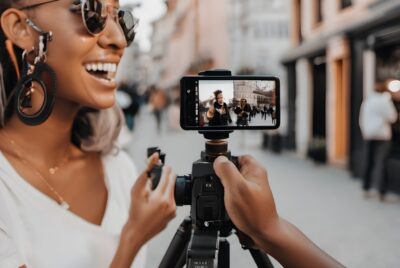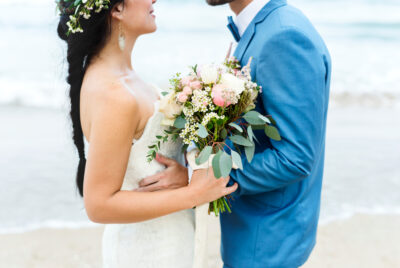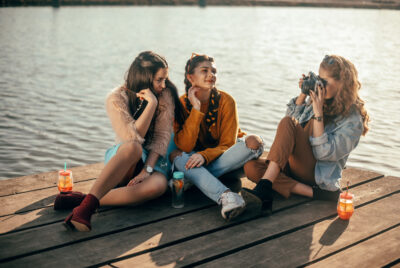Street Photography
I’m absolutely obsessed with street photography—and trust me, once you dive in, you’ll never see your city the same way again. It’s raw, real, spontaneous, and just a little unpredictable. Let me walk you through what makes it so special, what gear you need, and how to build your confidence on the streets with a camera in hand.
What Is Street Photography?
Street photography is the art of capturing candid moments in public spaces. It’s not just about taking pictures of strangers; it’s about documenting life as it happens—honest, unfiltered, and alive. Whether it’s a fleeting facial expression, a bold shadow on a wall, or a quiet exchange between strangers, every shot has a story.
Why Street Photography Captivates Me
Unscripted Moments of Life
The beauty of street photography is its unpredictability. There’s no posing, no do-overs—just pure, unscripted human moments that happen in the blink of an eye.
Everyday Beauty in Urban Chaos
Cities can be messy, noisy, and overwhelming—but within all that madness are moments of poetic beauty. A child chasing pigeons, light bouncing off a glass tower, or an old man reading a paper in the morning sun.
Storytelling Through Strangers
Every face, every gesture tells a different tale. I like to think of myself as a visual journalist, capturing chapters of city life without a single word.
Essential Gear for Street Photography
Let’s get real—gear can help, but it’s not everything. Still, having the right tools makes street photography way more fun and flexible.
Compact Cameras vs DSLRs
Smaller is better here. People don’t like having big DSLRs shoved in their face. Mirrorless or compact cameras like the Fujifilm X100V or Ricoh GR III are stealthy and sharp.
Lenses for the Streets
A 35mm or 50mm prime lens is perfect—wide enough to show context, but tight enough to focus on emotion. I stick to one lens per outing. It forces creativity.
Other Must-Have Accessories
Extra batteries, a small crossbody bag, wrist strap, and maybe a polarizing filter. Keep it minimal so you’re always ready.
>> See the full range of camera kits HERE <<
Best Settings for Street Shots
Manual mode is cool and all—but let’s be honest, you’ve gotta react fast on the street. So here’s what I usually go with:
Shutter Speed for Movement
To freeze people walking or biking, go for 1/250s or faster. If you want motion blur (like cars or trains), slow it down to 1/30s or less.
Aperture for Depth and Drama
f/5.6 to f/8 gives you decent depth while keeping subjects sharp. Go wider (f/2 or f/2.8) if you want dreamy separation from the background.
ISO Tips for Various Lighting
In daylight, ISO 100–400 is plenty. At night or indoors? Don’t be afraid to push it—today’s cameras handle ISO 1600+ like champs.
Techniques to Improve Your Street Photography
Shooting from the Hip
This is a favorite stealth technique. Hold your camera low, aim without looking, and fire away. You’ll get unique perspectives and people won’t freeze up.
Using Reflections and Shadows
Windows, puddles, mirrors—use them to add mystery or context. Shadows cast by buildings or people can frame your subject like nature’s own vignette.
Layering and Composition Tricks
Layering adds depth. Try to include a foreground, middle, and background. Use leading lines, rule of thirds, and negative space to guide the eye.
Legal and Ethical Considerations
Photographing People Respectfully
Yes, it’s legal (in most places) to shoot in public—but always be kind. If someone looks uncomfortable, I back off. Respect makes the world go round.
Understanding Public Photography Laws
In most countries, if you’re in a public place, it’s legal to photograph. But always check your local laws—some places have stricter rules, especially regarding children or government buildings.
>> See the full range of camera kits HERE <<
Post-Processing Street Photography
Keeping It Real While Enhancing Mood
Less is more. I usually adjust contrast, crop slightly, tweak shadows/highlights, and that’s it. Keep it honest.
Black and White vs Color
Black and white is timeless—it highlights form and emotion. Color tells a different story, focusing more on mood and atmosphere. Try both and see what clicks.
Using Crops and Contrast to Tell a Story
Cropping tight can focus attention, while contrast can create drama. But don’t overdo it—let the photo breathe.
Common Mistakes in Street Photography
Being Too Obvious or Hesitant
If you look nervous or fidgety, people notice. Be confident, even if you’re faking it at first. The camera is your passport.
Overediting the Image
Street photos should feel authentic. Avoid overly dramatic filters or heavy HDR—it takes away from the rawness of the moment.
Missing the Emotion
You can have the perfect composition, but if the shot lacks emotion, it falls flat. Wait for the laugh, the glance, the connection.
How to Build Confidence on the Streets
Start in Busy Tourist Spots
People expect cameras in these areas, so you’ll blend right in. Great practice zones.
Use Discreet Gear and Dress Casually
Leave the loud camera bag and tripod at home. Dress like a local, move naturally, and carry light gear.
Smile—It Disarms People!
Seriously, a smile can do wonders. If someone notices you taking their photo, flash a genuine grin and nod. Most people smile back.
Showcasing Your Street Photography Work
Creating a Photo Series or Zine
Turn your photos into a visual story. Print them. Sequence them. Share them. Zines are personal and impactful.
Using Instagram and Street Photography Hashtags
Tag with #streetphotography, #urbanphotography, or city-specific hashtags to reach your community.
Joining Exhibitions and Online Communities
Look for local galleries, photo walks, or online hubs like Flickr, Reddit, and street photography Facebook groups.
Conclusion
Street photography isn’t just about snapping random shots on the sidewalk. It’s about seeing the world differently—through light, timing, and heart. With some practice, the right mindset, and a little guts, you’ll start capturing the magic hidden in the everyday. The street’s got stories to tell—so go grab your camera and start listening.
>> See the full range of camera kits HERE <<
FAQs
1. Is street photography legal?
In most public spaces, yes. But always check your country’s specific laws and be respectful.
2. Do I need permission to photograph strangers?
Not legally, usually, but ethically it’s good to read the situation. A nod or smile helps ease tension.
3. What camera settings should I use for quick street shots?
Try aperture priority mode with ISO auto. Set your aperture to f/5.6 and let the camera handle the rest.
4. How do I approach someone for a street portrait?
Keep it simple: “Hi, I’m a street photographer—can I take your photo?” Most people say yes if you’re polite and clear.
5. What’s the best time of day for street photography?
Golden hours (early morning or late afternoon) offer the best light and soft shadows for dynamic shots.
Further reading
Check out our relevant articles on photography subjects, wide angle lens, outdoor photography, ethical considerations and sports photography.
Here are two informative and educational resources that delve into the art and practice of street photography:
-
Digital Camera World – 14 Essential Street Photography Tips
This comprehensive guide offers practical advice for both beginners and seasoned photographers. It covers various aspects of street photography, including setting themes, understanding lighting, and capturing candid moments. The article emphasizes creativity and provides actionable tips to enhance your street photography skills. -
Shotkit – 12 Essential Street Photography Tips for Urban Shooting
This article provides a wealth of information on street photography techniques. It discusses the importance of observation, composition, and storytelling in capturing compelling street images. The guide also touches on the ethical considerations and challenges faced by street photographers, making it a valuable resource for those looking to deepen their understanding of the genre.
These resources offer valuable insights and practical tips that complement the topics discussed in the article, helping you further explore and refine your street photography skills.





Comments are closed.